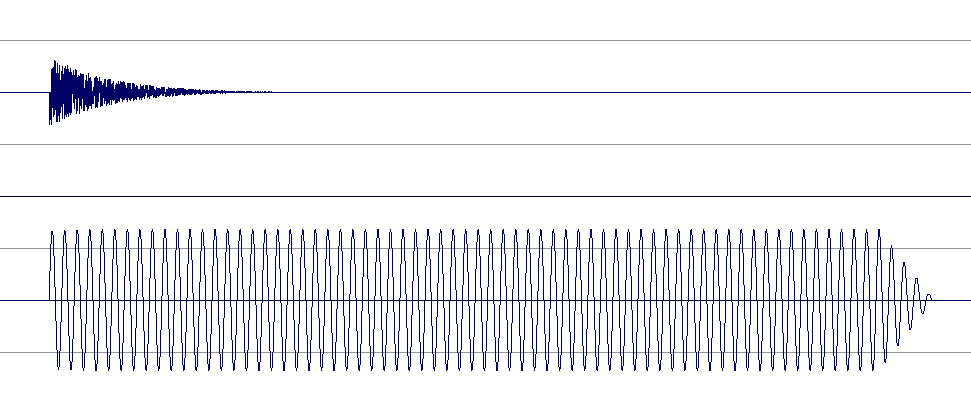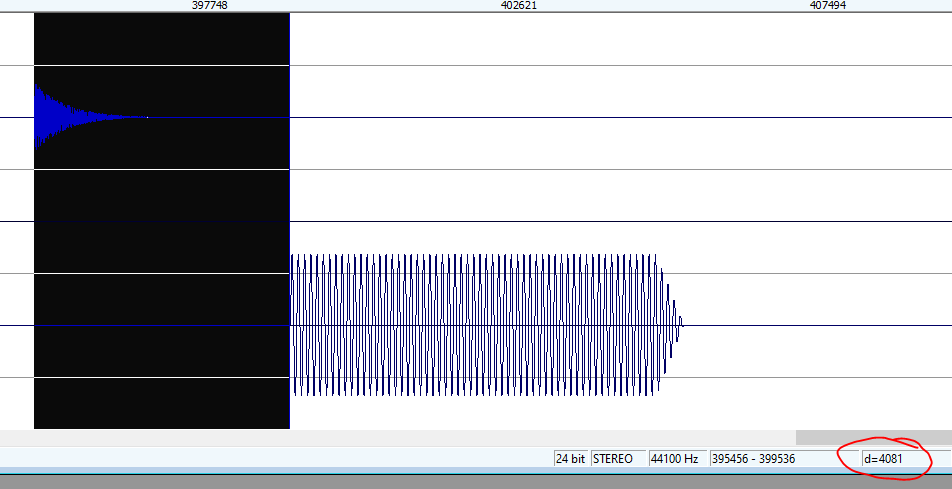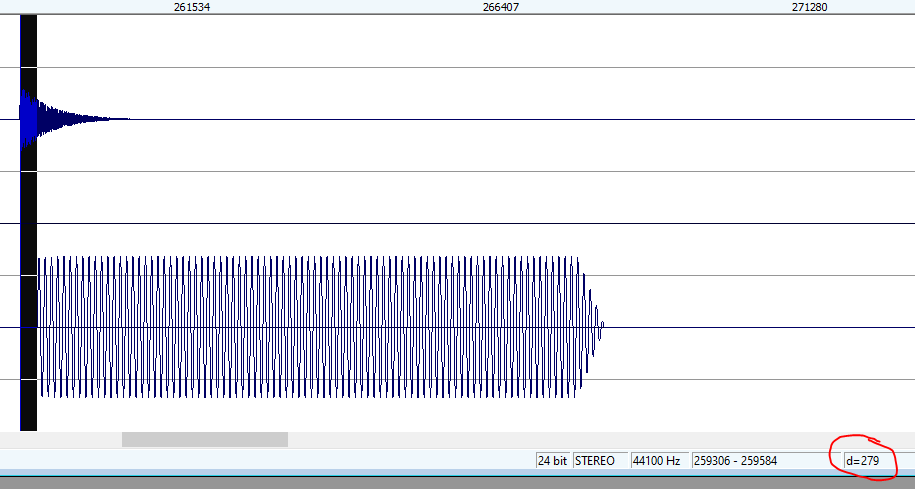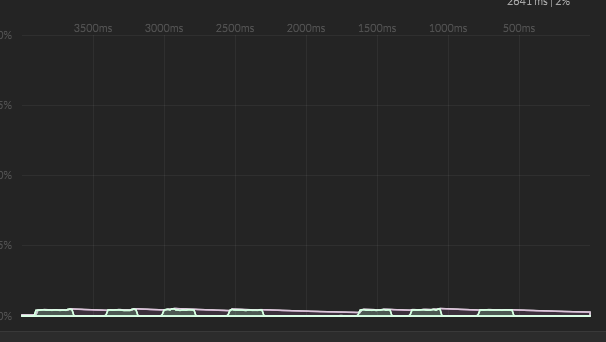Sampler Timestretching function result in high CPU (possible bug?)
-
@Christoph-Hart No DEBUG i'm on the release version with Faust enabled
-
@Christoph-Hart I will try that, thanks for the input!
-
@Christoph-Hart can't you stretch the loading over 10ms and get only a portion of the spike? 10ms is very manageable latency-wise
-
@aaronventure no its either synchronous (all at once) or defer and be as fast as possible (but I would expect that to be in the below 10ms range). It will still cause a CPU spike, but on the streaming thread where it won't cause drop outs and danger levels in your DAW CPU meter.
-
Alright, the results are in and it's super promising.
So basically I've ditched the idea of caching the last used timestretch ratio, I just pass it over to the streaming thread and tell it to get busy.
Now for the test setup I've added one sine wave sample, panned it full to the right and added a short noise click on the left channel. This way we can detect the latency for each timestretch start mode. Let's start with the synchronous one:

As you can see, the latency is basically zero. Good stuff, but look at the CPU graph:

So, Spikey McSpikeFace is not very convincing. Now let's take a look at the mode where it does nothing and introduces the full latency (with no CPU bump):

BOOOH! 4081 samples of boring silence waiting for the voice to begin, but at least we get a flat CPU curve:

OK, now HOLD ON TO YOUR PAPERS, this is the new mode:

Yes, 279 samples will go by until you hear the start of the sample. That's basically 1-2 audio buffers and almost unnoticeable. When repeating this, it averages out at around 270 samples with a slight variance of 20-30 samples. Now let's take a look at the CPU curve:

Spikes are GONE! Also the good thing is that when you're running in offline mode, it will automatically switch to the synchronous calculation so you don't get any delay when bouncing the track.
So how shall we proceed from here? I would suggest removing the entire option from the timestretching settings and set the new mode as default - you'll get a very low latency in realtime mode and when you bounce it to disk it will be sample accurate. Has anyone any objections?
-
@Christoph-Hart said in Sampler Timestretching function result in high CPU (possible bug?):
I would suggest removing the entire option from the timestretching settings and set the new mode as default
Sounds good to me, those graphics are very helpful for visualizing the situation, thanks!
-
@Christoph-Hart yeah 10ms is nothing, you can remove the entire thing.
Please write these numbers (or post the entire image set) to the docs. If someone needs real-time accuracy as well, they'll just report PDC with the transport start and the isOffline method, but knowing the correct number (270 samples) will save some time in testing.
Is the number of samples the same across sampling rates and buffer sizes?
-
@aaronventure said in Sampler Timestretching function result in high CPU (possible bug?):
Is the number of samples the same across sampling rates and buffer sizes?
No. The time it will take is samplerate agnostic and depends on how fast your OS is scheduling the background thread. Usually it's almost immediately, so you get around 1 buffer of latency because it can only be picked up by the next buffer (effectively you get less than a buffer of latency if the voice is supposed to be started mid buffer).
But maybe I still leave the option in for people who want to make sure that the sample playback is accurate?
-
@Christoph-Hart this still involves them having to report plugin delay compensation manually.
The old mode with CPU spikes is effectively useless in real products and there's no reason to have it, so you're just deciding on whether to have the option to automatically switch to it in offline, no?
If you don't do it and the new mode is always what's happening, then there is no way to actually get sample accurate playback as, as you said, there is up to 30 samples of jitter in the actual delay time.
I order to get this new instrument to sync up, devs need to add these 270 samples to the plugin delay calculation but even then it's not PERFECTLY time accurate.
If you make it so that it goes for the time accurate CPU-spikey mode in offline, then the devs who want time accuracy have to do the PDC only for non-offline playback, which is a few lines of code involving the transport handler but allows for perfect sample accuracy.
I both cases, non-stretching samplers will need delaying and in the second scenario you just bypass the delays when doing the offline render, along with setting PDC to zero.
This will be a very niche situation where it's super necessary to sync up the samplers and 5-10ms is an audible issue, but it's better to have the option of sample accurate playback and leave the spikey mode im when its rendering offline. Think some very transient-sensitive sound scenarios, like EDM kicks, where you can definitely tell that a sound is off by 270 samples. 30 samples (in real time playback) not so much but it's better to be able to say that your plugin is sample-accurate.
-
The old mode with CPU spikes is effectively useless in real products and there's no reason to have it,
Think some very transient-sensitive sound scenarios, like EDM kicks, where you can definitely tell that a sound is off by 270 samples.
Pick one :)
So my suggestion would be:
- the new default is the new one without spikes and low latency
- if you're rendering, then the default one is the one with spikes and perfect sample accuracy
- you have the option to turn on sample accurate playback in realtime to "preview" how it sounds when rendered (or if you can live with the 10% CPU spikes, if you're running in 1024 samples eg. then it shouldn't be a complete dealbreaker)
People do not have to care about option 3 (and any of this) as long as they don't use "some very transient-sensitive sound scenarios, like EDM kicks", then they can switch HQ mode on to hear what it really sounds in the end.
-
Alright, it's pushed, please have a go at it!
-
@Christoph-Hart said in Sampler Timestretching function result in high CPU (possible bug?):
Pick one :)
Heh but the PDC if submitted properly gets these kicks down do 30ms jitter in realtime, which should be fine.
@Christoph-Hart said in Sampler Timestretching function result in high CPU (possible bug?):
you have the option to turn on sample accurate playback in realtime to "preview" how it sounds when rendered (or if you can live with the 10% CPU spikes, if you're running in 1024 samples eg. then it shouldn't be a complete dealbreaker)
People do not have to care about option 3 (and any of this) as long as they don't use "some very transient-sensitive sound scenarios, like EDM kicks", then they can switch HQ mode on to hear what it really sounds in the end.Nice. Great job, man.